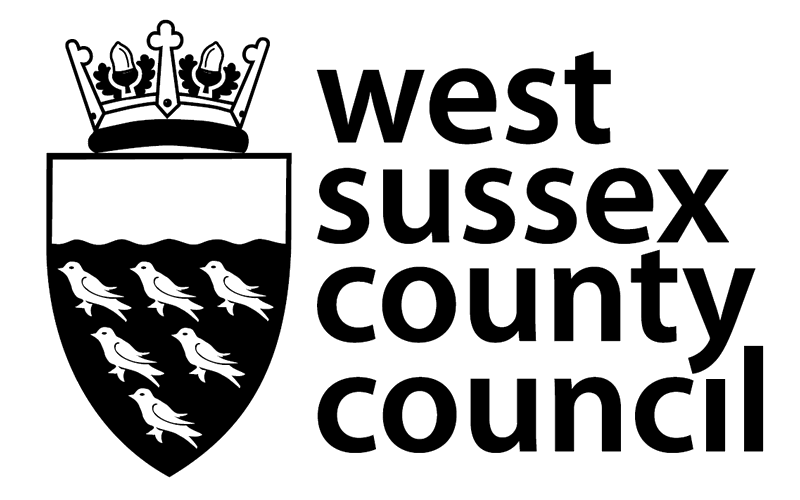1 Overview
When we make new footways and footpaths, they are designed and built with accessibility in mind. This means we make sure that as many people as possible can use them, including those with disabilities. Most pedestrian facilities within West Sussex were built a long time ago, before modern accessibility standards. There are too many places that need improvement for us to carry out work all at once, so we do this work gradually.
We make improvements as a result of:
- community requests from:
- local councillors
- members of parliament (MPs)
- community groups
- individuals
- routine maintenance, where we may change layouts to meet accessibility standards at the same time as carrying out other works such a large footway or road repairs
You can make a request for a pedestrian dropped crossing or footway accessibility improvement. You do not have to pay for these as the improvement makes a difference for all road users. This is different to a dropped kerb that provides access to a driveway on a individual's property, which only benefits the individual and is therefore chargeable.
You can see descriptions and examples of what pedestrian dropped crossings and footway accessibility improvements are below.
Pedestrian dropped crossings
A pedestrian dropped crossing, sometimes called a dropped kerb, is an 'uncontrolled' point at which pedestrians can cross a road. They generally have an area where the footway ramps down to the road surface and the kerb lowers to meet the road. They usually have yellow bumpy paving slabs, called tactile paving, to help pedestrians with visual impairments to find the crossing. These crossings are appropriate in quiet locations and where the speed of traffic is lower.
This compares to more formal 'controlled' crossings, such as zebra, pelican and toucan crossings. Controlled crossing also have a ramped footway, but the tactile paving is red. There are also signs, markings and lights. This means they usually occur in busier locations or where the speed of traffic is faster.
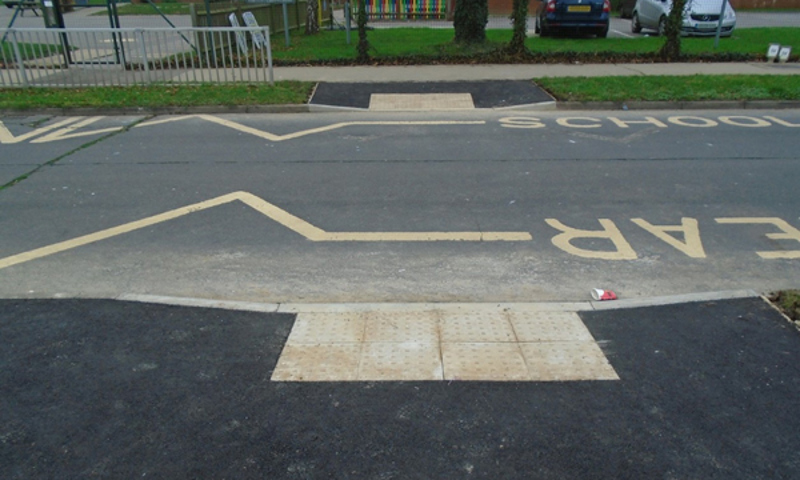
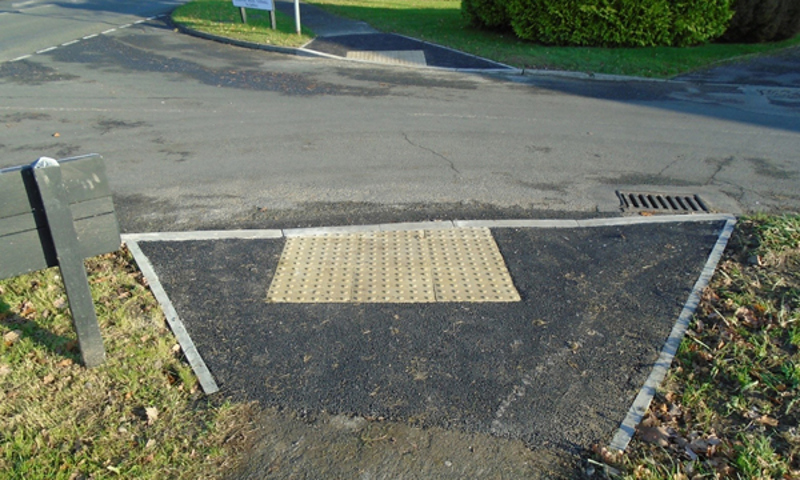
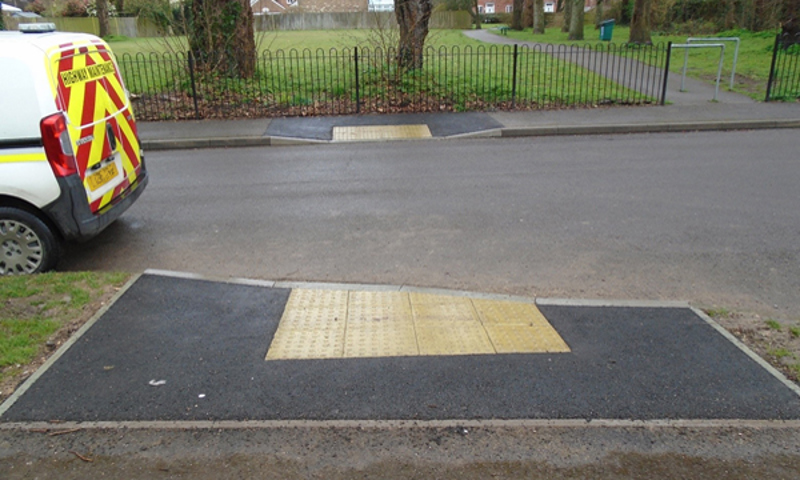
Footway accessibility improvement
Footway accessibility improvement is a term used to describe any small or local adjustment to a footway, other than a pedestrian dropped crossing, which helps pedestrians to use the footway. Some examples include:
- changing steps to ramps, improving access for wheelchair users
- widening narrow footways so that allow mobility aid users can use facility safely
- installing a new path connecting two separate paths to avoid users having to walk on a verge or in the road
- adding a central refuge island to crossing points at wide junctions
Things that are not accessibility improvements
You cannot request bigger improvements to footways and related features as an accessibility improvement request. This is because they require a more in-depth process. You can make this type of request through the Community Highway Scheme.
Maintenance work, such as repairing potholes in roads and footways, replacing damaged kerbs and so on are not accessibility improvements. Report maintenance issues on our page make an enquiry about a road or pavement.
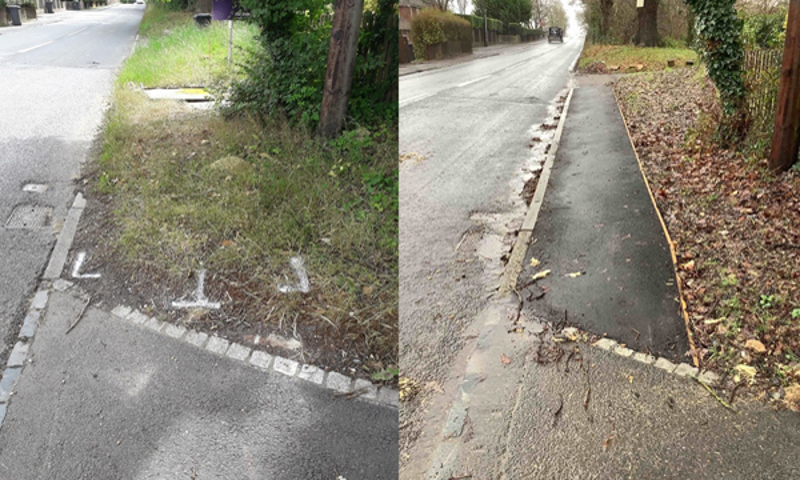
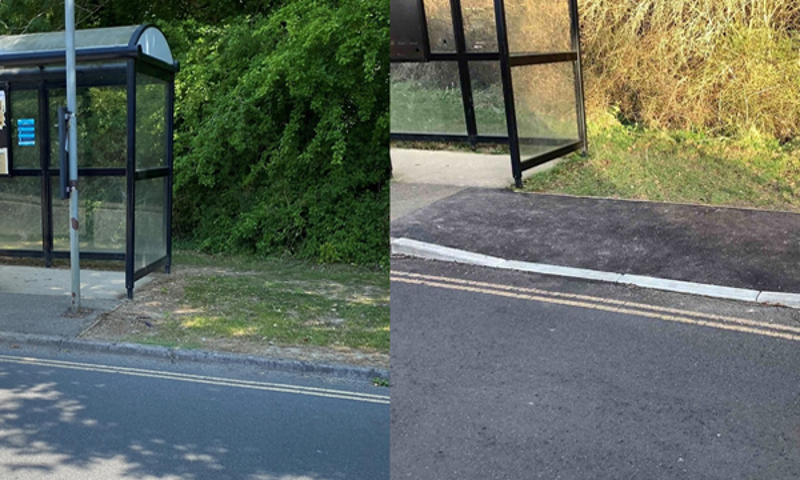
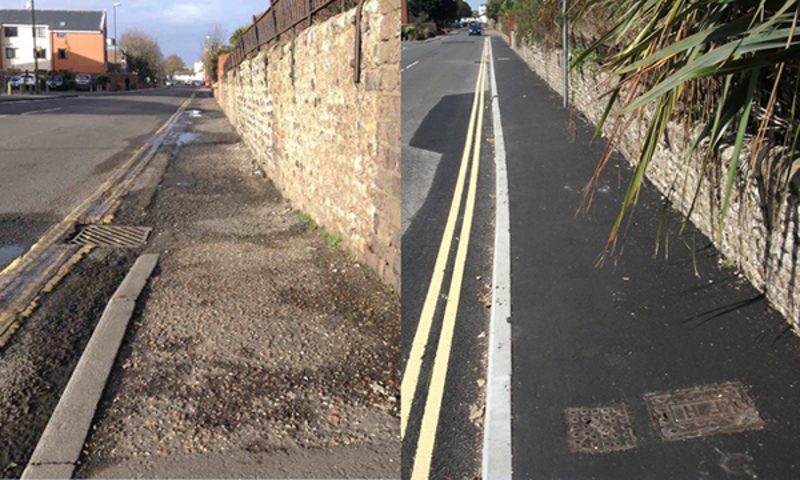
2 How we deal with requests
We assess and prioritise requests for pedestrian dropped crossings and accessibility improvements within 10 working days of receipt. A county council officer will visit the site to see if the improvement you want is suitable. They may need to contact you if:
- they need further information
- your request is particularly large or complex
- they need to discuss alternative options
We must prioritise which requests we build first to make the best use of our funds. So the officer will also make an assessment of priority. We prioritise requests bearing in mind:
- whether extra funding is available, for example:
- Section 106 developer funding
- contributions from parish, town, district or borough councils
- how much community support there is for the change
- the location of the change you request, for example if it is close to facilities such as a school, community or leisure centre and so on
- the economic impact, such as benefit to local shops or business centres
- the condition of the existing footway
- how much benefit the improvement will bring, for example if there any accessibility features already present or nearby
The officer will assign a value to each of these factors. They will total the values to make a priority score. We action requests based on their priority, starting with the highest scoring.
The officer will let you know the outcome of the assessment.
How long it takes to make the change
The time it takes to complete a request depends on the priority score. We will usually deliver the highest priority requests approximately 12 months after you make the request.
In this time we follow a detailed process, including:
- necessary safety checks
- designing the works
- tendering to ensure value for money
- nominating a suitable contractor to do the work
- the contractor planning and doing the work
We can sometimes reduce the time it takes for very exceptional requests. However, we still must ensure that we correctly design the work and follow the county council's procurement requirements.
Lower priority requests can take much longer. We constantly receive new requests. If new requests have a higher priority score, we will build those ahead of those with a lower score.
Building the change
Where possible, we design all pedestrian dropped crossings and accessibility improvements to meet or exceed modern standards. The standards are set out in a number of nationally recognised guidance documents. You can find the main standards on the GOV.UK website. These include:
If a footway was built a long time ago, there may not be enough space to include all accessibility features. In these cases, we may be able to make some improvements, but they may not meet all of the current standards.
We will not make any changes that negatively affect the safety of pedestrians or other road users.
3 Making a request
To make your request for a pedestrian dropped crossing or accessibility improvement, use our general enquiry form below.
Give as much detail as you can. This helps us to assess and prioritise your request quickly. For example, you could explain:
- where you are trying to get to
- where you are coming from
- what the specific problem you experience is

